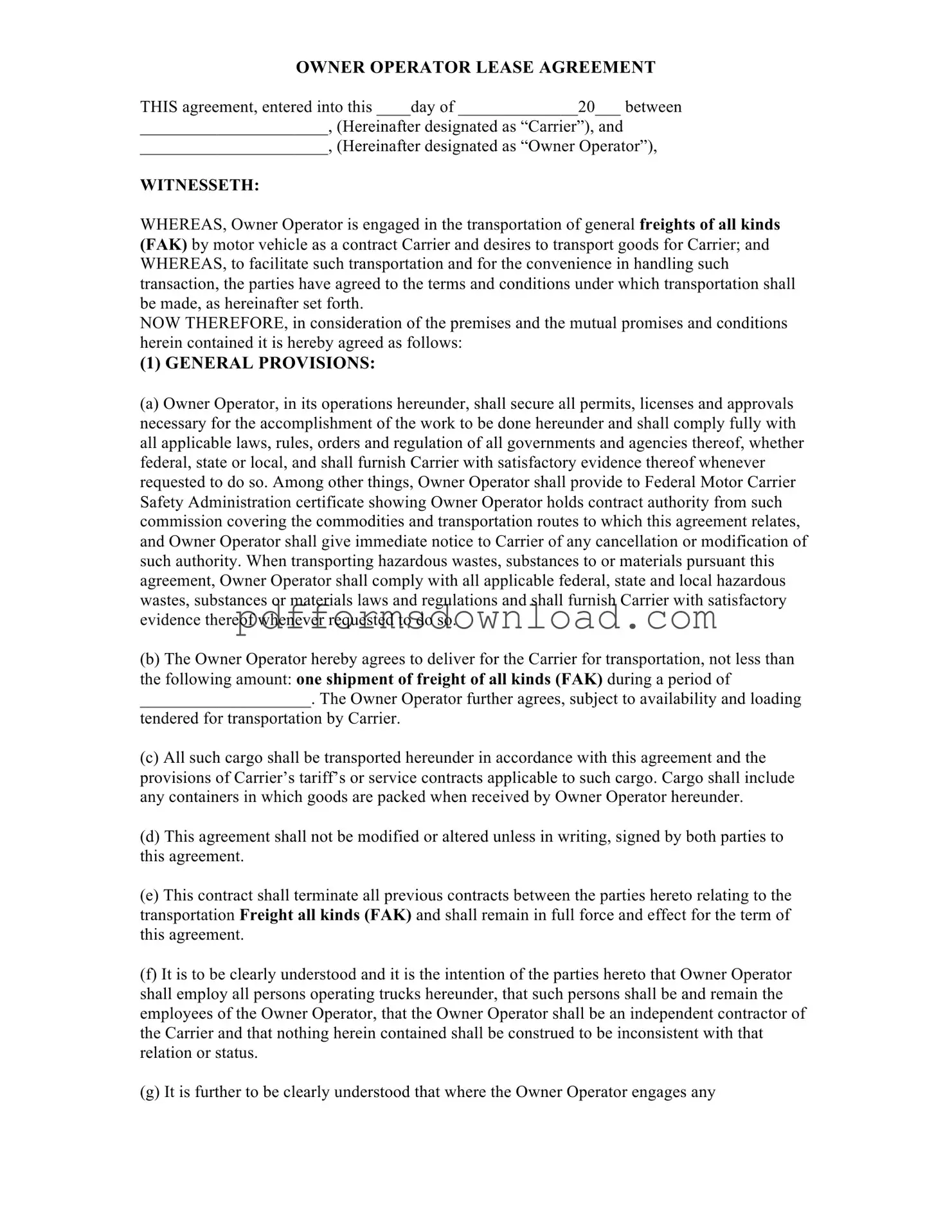What is an Owner Operator Lease Agreement?
An Owner Operator Lease Agreement is a contract between a carrier and an owner operator. This document outlines the terms under which the owner operator will transport goods for the carrier. It covers responsibilities, liabilities, and compensation, ensuring both parties understand their roles in the transportation process.
What are the key responsibilities of the Owner Operator?
The Owner Operator must secure all necessary permits and licenses for transportation and comply with applicable laws. They are responsible for the safe transport of goods and must provide written receipts upon delivery. Additionally, the Owner Operator must maintain insurance coverage that meets federal and state requirements and indemnify the Carrier from any liabilities arising from their operations.
How does compensation work in this agreement?
Compensation for the Owner Operator is based on the rates and charges outlined in the attached rate schedule. The Carrier agrees to pay the Owner Operator within sixty days of receiving an invoice. This ensures timely payment for services rendered, allowing the Owner Operator to manage their business effectively.
Can the Owner Operator assign their responsibilities to someone else?
No, the Owner Operator cannot assign their responsibilities or rights under this agreement without the Carrier's written consent. This clause ensures that the Carrier maintains control over who is operating under their name and that all parties involved meet the necessary qualifications and standards.
What happens if there is a dispute regarding the agreement?
In the event of a dispute, the agreement is governed by the laws of the state specified in the document. Both parties must adhere to the terms outlined in the agreement and attempt to resolve any issues amicably. If necessary, legal action can be pursued, but it is advisable to seek resolution through communication first.
